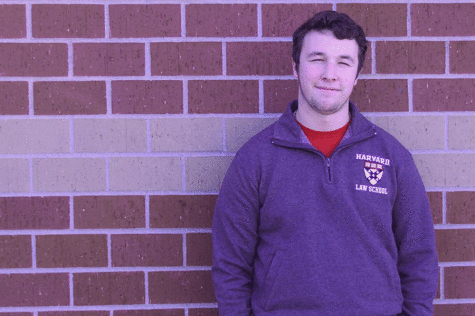Lack of diversity results in an intolerant society
Johnson County does not offer a realistic representation of the diversity of American demographics
October 2, 2014
The United States is often referred to as “The Great Melting Pot,” presumably because of the ability of the country to mold many different ethnic, religious and cultural backgrounds into one coherent national identity. However, it is hard to observe such a “melting pot” in Johnson County, Kansas. The demographics of Johnson County do not accurately represent those of America, which results in unintentional intolerance within communities of people who never experience extreme diversity. The population of JoCo is 81.0% white, compared to a 62.6% national average. To put that into perspective, if the national percentage was equal to that of JoCo, there would be over 60 million more white people living in the United States.
This gap creates a noticeable division between life in our square of Kansas, and that of the rest of the country. This occurs specifically within the walls of high schools, where students have seldom lived away from an area that is predominately white, and have not had the opportunities that college and adult life gives them to experience people of different backgrounds. With this comes the acceptance and tolerance of casual discrimination against minorities, because students have not been exposed to life where a racist or homophobic joke is met with backlash. However, this intolerance has larger repercussions, as it has the potential to create a generation who is not fully educated on different lifestyles other than their own.
Recently at Mill Valley, a student’s ID picture received an uproar of support on Twitter after they posed wearing a scarf around their head, seemingly imitating a hijab. Over 100 people favorited said tweet, and many people voiced their opinion on how hilarious they thought the ID was. Although the student likely did not mean this as a deliberate move of racism and appropriation against women of the Islamic faith, it is ultimately offensive toward women who wear the hijab (or any other Muslim head garment) as a representation of their faith.
However, the most alarming fact of the situation is the amount of support that the student received from other students. Nobody spoke out for the fact that the appropriation of the hijab could possibly offend any woman of Muslim faith who could happen to come across it on Twitter, but rather wrote it off as a joke. Once again, I do not believe that any student who supported the ID picture meant any malice toward members of the Islam community, but it is important that students educate themselves so they can recognize when something is a joke, and when it borders on the lines of racism. This event gives light to a larger problem within Johnson County, and many other parts of the country, where people become desensitized to casual racism, or other types of discrimination, because they are never in an environment that is as diverse as America as a whole.
The issue of discrimination against minorities has raged for centuries, from the still ongoing struggle of race, to the more recent fight for the acceptance of the LGBT community, all forms of prejudice create divisions within society, which hinders cooperation between humans. A cooperative society cannot exist in a place where certain minorities are treated as lower-class citizens.
The way to combat a society in which minorities are considered inferior is up to the individual. It is an individual’s responsibility to ensure that they are not aiding discrimination, but rather embracing differences within people, and recognizing that those differences do not define that person. With this mindset, it is possible to live in a world where minorities can live their lives with equal opportunities of those who have already been born inherently privileged. Without individual accountability, however, America is doomed to continue on a path toward segmentation, and an ultimately unsafe and uncooperative society.
I have included some links below that contain information on various racial, sexual and religious minorities. If you feel so inclined, I would highly recommend reading over a few that you may feel you are unfamiliar with.
GSM (Gender and Sexuality Minorities) information
Religions (including Islam, Judaism, Mormonism, etc.)











Kristen Crosbie • Oct 3, 2014 at 1:46 pm
Worthy argument, and well written. This is one of the reasons travel is so important. Nicely done, Clayton Kistner 🙂